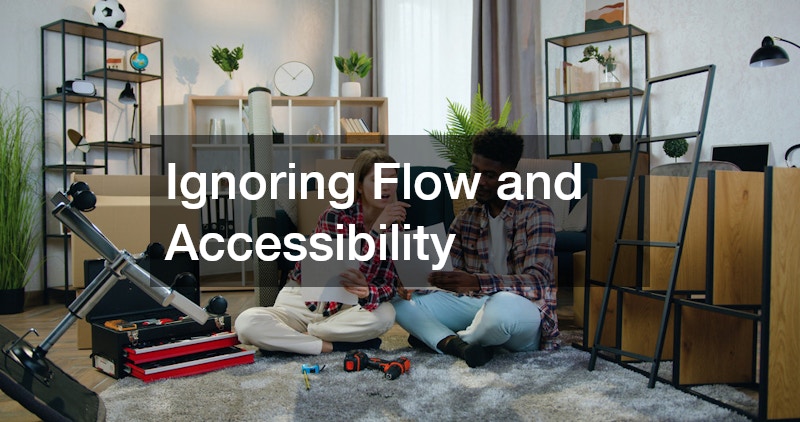Choosing the right floor plan is one of the most critical decisions when building or buying a home. Home floor plans not only dictate the flow and functionality of your living space but also significantly impact your daily life satisfaction. By selecting a layout that aligns with your personal and family needs, you can ensure your home remains comfortable and efficient well into the future.
Factors to Consider When Choosing a Floor Plan
Understanding Your Needs and Lifestyle
When selecting a floor plan, it is crucial to evaluate your current lifestyle and how it might evolve over time. Consider whether you are planning to expand your family or need spaces tailored to hobbies or home offices. Anticipating these changes ensures that your home will remain practical and comfortable in the long run.
Your lifestyle habits, such as entertaining guests or requiring tranquil, personal spaces, greatly influence the suitability of a floor plan. Open layouts are ideal for those who frequently host parties or family gatherings. In contrast, more compartmentalized plans might serve best for those who value privacy and separate retreats.
Another critical aspect to consider is your environmental needs, such as accessibility considerations if you or family members are aging. Assessing how doorways and hallways are navigated can help ensure that your home remains practical and inclusive. Flexibility in design can accommodate a broad spectrum of living situations without costly renovations later.
Evaluating Space and Functionality
The size and configuration of rooms are fundamental in determining the functionality of a floor plan. For instance, larger rooms may offer more flexibility but can also present challenges in terms of heating and cooling. The key is to achieve a balance where space is utilized optimally for both function and comfort.
Storage solutions should also be top of mind when examining potential floor plans. Ample storage prevents clutter and helps maintain a clean, organized living environment. Ideally, a floor plan will integrate storage solutions seamlessly into the design, making efficient use of space without sacrificing aesthetic appeal.
Flow is another crucial element; your daily routine should not be disrupted by a poorly planned layout. Areas such as kitchens and living spaces often require fluid movement and cohesive connectivity. Ensuring that these spaces allow for easy interaction and accessibility will maintain the usability and enjoyment of your home.
How Different Floor Plans Affect Energy Efficiency
Orientation and Natural Light
The orientation of a home can significantly influence its energy efficiency and comfort. Homes with a favorable orientation take advantage of natural light, reducing the need for artificial lighting during the day. Strategic placement of windows can enhance the ambiance while conserving energy, contributing to reduced utility bills.
South-facing windows, for instance, capture warmth during the winter, which can be a crucial factor in colder climates. Conversely, in warmer climates, homes can benefit from thoughtful shading solutions to minimize heat buildup. Understanding sun patterns is essential to maximizing natural light while maintaining a comfortable indoor temperature throughout the year.
Natural light also plays a role in the psychological well-being of a home’s inhabitants. Bright, sunlit spaces can promote a positive mood and enhance productivity. Therefore, when choosing a floor plan, prioritize layouts that optimize exposure to natural light for both economic and psychological benefits.
Insulation and Material Considerations
Proper insulation is a hallmark of an energy-efficient home, heavily influenced by the design and materials used in the floor plan. Effective insulation helps maintain a constant indoor temperature, reducing the need for excessive heating and cooling. Materials such as double-glazed windows and thermal curtains can further enhance thermal efficiency.
Material selection in floor plans not only affects energy efficiency but also impacts the overall sustainability of a home. Opting for eco-friendly, renewable materials contributes to a reduced environmental footprint. Consider incorporating features such as energy-efficient appliances and sustainable building materials to align with eco-conscious living.
Common Mistakes to Avoid When Choosing a Floor Plan
Overlooking Future Needs
A common pitfall when choosing a floor plan is failing to consider future requirements and changes in your life. Today’s needs might differ significantly from those a decade down the road, impacting the home’s functionality and suitability. Planning for adaptability ensures that your living space can evolve alongside your lifestyle changes.
Neglecting to account for family growth or the demands of aging can lead to inconvenient and costly renovations. A flexible floor plan, with options for easy modifications or extensions, can save time and resources in the future. This proactive approach enhances the long-term value and comfort of your home.
Ignoring Flow and Accessibility
Another frequent error is overlooking the importance of flow and accessibility within the chosen floor plan. Inadequate consideration for the movement and use of space can result in an impractical living environment. Areas that are difficult to navigate or exclude accessibility features can hinder the enjoyment and functionality of a home.
Effective flow ensures that all areas of the home are easily accessible from various points, promoting seamless transitions between rooms. Focus on ensuring corridors and doorways are spacious and unobstructed. This attention to design detail enhances livability and caters to the needs of all residents, including those with mobility impairments.
Choosing the right floor plan is an individualized process that requires careful consideration of your lifestyle and future needs. By prioritizing aspects like functionality, energy efficiency, and adaptability, you can create a living environment that serves well in the present and future. Ultimately, the best floor plan is one that enhances your lifestyle and meets your unique requirements through a thoughtful and personalized approach.






